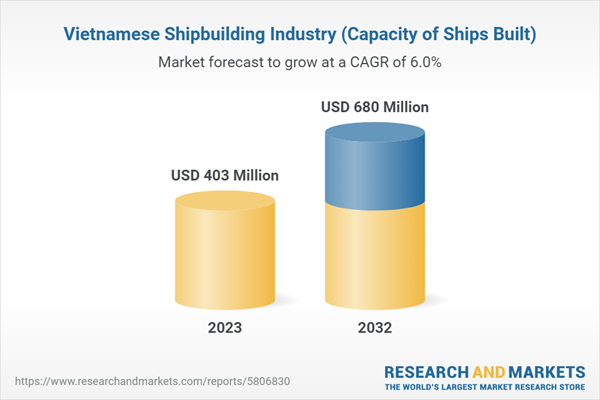Benefiting from a long coastline bordering the Gulf of Thailand, the South China Sea and Tokyo Bay, Vietnam has the second highest number of international ports in ASEAN, after the Philippines. There are three major port cities along the Vietnamese coastline - Haiphong in the north, Ho Chi Minh City in the south and Da Nang in the central region. They are all leading container ports in Asia in terms of cargo capacity, with Ho Chi Minh City port cargo throughput accounting for the largest share of the Vietnamese market.
Meanwhile, the northern port of Hai Phong is a major port for international container traffic. Hai Phong International Container Terminal (HICT) can call large container ships, reducing the time and cost of shipping containers to northern Vietnam. With its strategic location, Da Nang manages cargo from the central region, linking Vietnam with Myanmar, Thailand and Laos.
While the rate of cargo movement through the country's seaports typically increases by an average of 10-15% per year, more investment is needed to develop the country's shipping fleet and ports due to rising freight rates and supply chain issues.
According to the analyst, the capacity of ships built will reach US$ 680 million in 2032 and the CAGR in 2023 to 2032 is 6.0%
In terms of international trade activities, Vietnam ports ship components, machinery and raw materials to support its shipbuilding activities. Major import sources include South Korea, Japan, China and countries in the European region, among others. Vietnam's shipbuilding industry also exports ships to international markets, including merchant ships, offshore support vessels and fishing vessels; major export destinations include Europe, Asia and the Middle East.
Due to the growth in global trade, offshore energy project development and increasing demand for specialized vessels, the analyst expects a positive outlook for the Vietnamese shipbuilding industry from 2023 to 2027, with a growing Vietnamese shipbuilding market full of opportunities for growth. The adoption of advanced technology, emphasis on environmental protection and training of skilled labor are critical to remain competitive.
Topics Covered
- Overview of Vietnam's shipbuilding industry
- The economic and policy environment of Vietnam's shipbuilding industry
- What is the impact of COVID-19 on the Vietnamese shipbuilding industry?
- Vietnam Shipbuilding Industry Market Size 2023-2032
- Analysis of the main Vietnamese shipbuilding industry producers
- Key drivers and market opportunities for Vietnam's shipbuilding industry
- What are the key drivers, challenges and opportunities for Vietnam's shipbuilding industry during the forecast period of 2023-2032?
- Which companies are the key players in the Vietnamese shipbuilding industry market and what are their competitive advantages?
- What is the expected revenue of the Vietnam Shipbuilding Industry market during the forecast period of 2023-2032?
- What are the strategies adopted by the key players in the market to increase their market share in the industry?
- Which segment of the Vietnam shipbuilding industry market is expected to dominate the market in 2032?
- What are the main unfavorable factors facing the Vietnamese shipbuilding industry?
Companies Mentioned
- Damen Shipyards Group
- Hyundai HeavySamsung Heavy
- Mitsui Engineering & Shipbuilding
- VinashinVinalines
- Nam Trieu Shipbuilding
- Pha Rung Shipyard
Methodology
Background research defines the range of products and industries, which proposes the key points of the research. Proper classification will help clients understand the industry and products in the report.
Secondhand material research is a necessary way to push the project into fast progress. The analyst always chooses the data source carefully. Most secondhand data they quote is sourced from an authority in a specific industry or public data source from governments, industrial associations, etc. For some new or niche fields, they also "double-check" data sources and logics before they show them to clients.
Primary research is the key to solve questions, which largely influence the research outputs. The analyst may use methods like mathematics, logical reasoning, scenario thinking, to confirm key data and make the data credible.
The data model is an important analysis method. Calculating through data models with different factors weights can guarantee the outputs objective.
The analyst optimizes the following methods and steps in executing research projects and also forms many special information gathering and processing methods.
1. Analyze the life cycle of the industry to understand the development phase and space.
2. Grasp the key indexes evaluating the market to position clients in the market and formulate development plans
3. Economic, political, social and cultural factors
4. Competitors like a mirror that reflects the overall market and also market differences.
5. Inside and outside the industry, upstream and downstream of the industry chain, show inner competitions
6. Proper estimation of the future is good guidance for strategic planning.

LOADING...
Table Information
| Report Attribute | Details |
|---|---|
| No. of Pages | 60 |
| Published | May 2023 |
| Forecast Period | 2023 - 2032 |
| Estimated Market Value ( USD | $ 403 Million |
| Forecasted Market Value ( USD | $ 680 Million |
| Compound Annual Growth Rate | 6.0% |
| Regions Covered | Vietnam |
| No. of Companies Mentioned | 6 |









